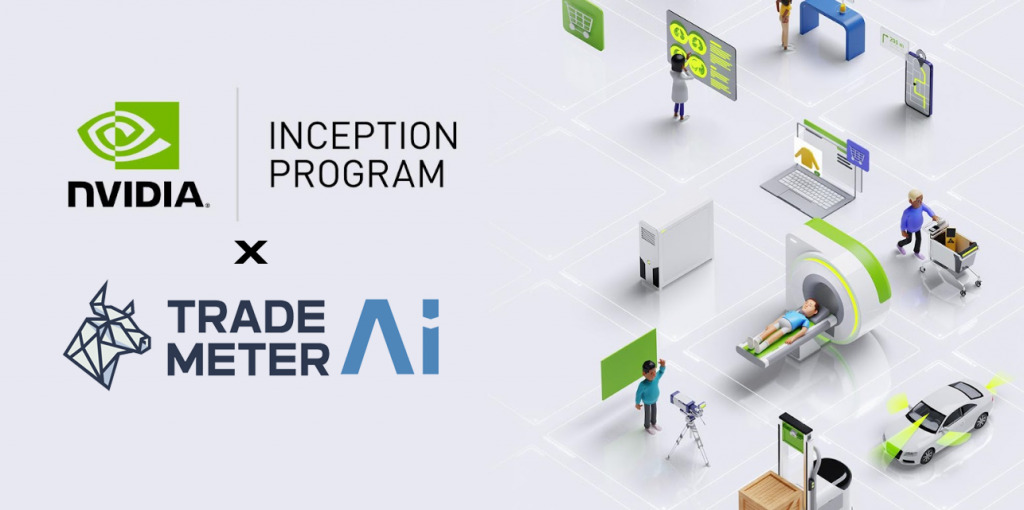20 Excellent Tips For Deciding On AI Stock {Investing|Trading|Prediction|Analysis) Websites
20 Excellent Tips For Deciding On AI Stock {Investing|Trading|Prediction|Analysis) Websites
Blog Article
Top 10 Tips For Evaluating Market Coverage Using Ai Trading Platforms And Stock Forecasting
Market coverage is an essential aspect to consider when looking at AI trading platforms for stock prediction or analysis in that it defines the depth and breadth of assets and markets you are able to access. A platform with extensive market coverage will allow you to diversify portfolios, explore global trading opportunities and adapt to different strategies. Here are the top ten tips to evaluate the market coverage of these platforms:
1. Evaluate Supported Asset Classes
Stocks: Ensure the platform covers major stock exchanges (e.g., NYSE, NASDAQ, LSE, HKEX) and includes small-cap mid-cap, and large-cap stocks.
ETFs - Check to see if your platform supports an extensive selection of ETFs which offer exposure to a variety of diverse regions, sectors or themes.
Options and Futures: Check if the platform supports derivatives like options or futures, as well as other leveraged products.
Commodities and Forex: Determine whether the platform has forex pairs and precious metals, energy commodities, and agricultural products.
Cryptocurrencies. Find out if they support all the major cryptocurrencies and altcoins (e.g. Bitcoin, Ethereum).
2. Check Geographic Coverage
Global markets: Make sure the platform is inclusive of major global markets like North America, Europe and Asia-Pacific.
Regional focus: Find out if your platform has a specific area of focus or market that matches to your trading needs.
Local exchanges: Make sure you know whether the platform is compatible with regional or local exchanges that relate to your area or your strategy.
3. Consider comparing real-time data with delayed data delayed data
Real-time Market Data: The system must offer real-time data on trading to facilitate quick decision-making.
Delayed data: Find out whether you can obtain delayed data for free or at a discounted cost. This could be sufficient for long-term investors.
Data latency. Examine whether your platform reduces the latency of real-time data feeds.
4. Evaluation of Historical Data
Depth historical data: Ensure whether the platform is able to provide comprehensive historical data (e.g. more than 10 years of data) to analyze and backtest.
Granularity: Check if historical data contains intraday, daily weekly, monthly, and daily granularity.
Corporate actions: Make sure that the historical data includes stock splits and dividends.
5. Examine the market depth as well as order book information
Data Level 2: Ensure the platform has Level 2 (order book depth) to allow for more price discovery.
Spreads of bids: Make sure that the platform displays real-time bid-ask spreads for precise pricing.
Volume data - Determine if the platform contains specific volume data for studying the market's activity and liquidity.
6. Assess how much coverage is available for Indices and Sectors
Major indices: Ensure that your platform can support major indices like the S&P 500 (e.g. NASDAQ 100 or FTSE 100), for benchmarking based on indexes.
Specific data for a specific sector: For targeted analysis, look into whether the platform provides data specific to a specific industry (e.g. technology, healthcare, or energy).
Custom indices. Check that the platform has the capability to track or build custom indices that satisfy your requirements.
7. Examine the integration with Sentiment Data and News
News feeds - Ensure that the platform has integrated real-time news feeds that contain market-moving news from trusted (e.g. Bloomberg or Reuters) sources.
Check the sentiment analysis tool on the platform based on data from social media, news or other sources.
Strategies that are based on events (e.g. earnings announcements or economic reports) Verify if your platform allows trading strategies that are based on news events.
8. Check for Multi-Market Trading Capabilities
Cross-market trading: Make sure the platform allows trading across multiple markets and asset classes from one interface.
Currency conversion: Verify if the platform supports multi-currency accounts as well as automatic currency conversions for trading internationally.
Support for time zones: Find out whether the platform allows trading in multiple time zones that are used for trading on global markets.
9. Examine coverage of alternative data sources
Check for alternative data sources.
ESG data - Check that the platform offers environmental, social, and governance data (ESG). This is essential for a an investment that is socially conscious.
Macroeconomic Data: Make sure whether the platform contains macroeconomic indicators such as GDP, inflation and interest rates.
Review customer feedback and market Reputation
User feedback: Use user reviews to determine the reliability of the platform and market coverage.
Reputation in the industry: Check whether the platform is recognized by industry experts in terms of market coverage.
Case studies: Seek out cases studies or testimonials that highlight the platform's effectiveness in specific assets or markets.
Bonus Tips
Trial time: You may try a demo, trial or a free trial to test the coverage of markets and the data quality.
API access - Check if the API can be used to gain access to data from the market in a programmatic manner.
Customer support. Be sure the platform can provide support for data or market related queries.
If you follow these guidelines and techniques, you will be able to assess the market coverage offered by AI trading platforms that predict or analyze stocks and ensure that you select the one that gives you access to the markets and information you need for a successful trading. Comprehensive market coverage lets you to diversify and explore your portfolio. It also helps you adapt to changes in market conditions. View the top rated best stock advisor for blog info including incite, copyright financial advisor, best ai trading software, trader ai review, trade ai, chart ai for trading, best stock advisor, ai stock prediction, best ai for trading, investing ai and more.
Top 10 Tips For Evaluating The Scalability Ai Stock Predicting/Analyzing Trading Platforms
Scalability is an important factor in determining whether AI-driven platforms for stock forecasting and trading can handle increasing user demand, volume of data and market complexity. Here are 10 best suggestions for evaluating the scalability.
1. Evaluate Data Handling Capacity
TIP: Ensure that the platform is able to process and analyze huge databases.
Why: Scalable platforms must handle growing data volumes without compromising performance.
2. Test Real Time Processing Capabilities
See the way the platform handles real-time data streams, such as stock prices and breaking news.
What is the reason? Analyzing in real-time is crucial in trading decisions, and delays can lead to missed opportunities.
3. Check Cloud Infrastructure and Elasticity
Tip: Determine if the platform uses cloud-based infrastructure, e.g. AWS or Google Cloud.
Why: Cloud platforms offer flexibility, allowing the system to increase or decrease its size according to demand.
4. Algorithm Efficiency
Tip: Assess the efficacy of AI models that are utilized to make predictions (e.g. Deep Learning, Reinforcement Learning).
Reason: Complex algorithms can consume a lot of resources, so the ability to optimize these algorithms is vital to scalability.
5. Learn about Parallel Processing and Distributed Computer Systems
Verify if your platform supports the concept of distributed computing or parallel processing (e.g. Apache Spark, Hadoop).
The reason: These technologies enable faster data processing and analysis across multiple nodes.
Review API Integration, and Interoperability
Tip: Check the integration of the platform to external APIs.
The reason is that seamless integration allows the platform to be adapted to the changing environment of trading and data sources.
7. Analyze User Load Handling
Make use of a high-traffic simulation in order to check the response of the platform under pressure.
Why: Performance of a platform that is scalable shouldn't be affected by the growth in users.
8. Examine the the model's retraining and adaptability
Tips: Examine how often and effectively AI models are being trained with the help of new data.
Since markets are always changing It is crucial to ensure that models are up-to-date.
9. Verify fault tolerance and redundancy
TIP: Ensure that the platform has failover mechanisms and redundancy to handle hardware or software issues.
Why: Because the cost of downtime when trading, fault tolerance is crucial for scaling.
10. Monitor Cost Efficiency
Tips: Think about the costs of scaling up your platform. Consider cloud resources like data storage as well as computing power.
The reason: Scalability shouldn't come at an unsustainable cost So balancing performance and expense is critical.
Bonus Tip Future-proofing
Make sure the platform is built to take advantage of new technologies (e.g. quantum computing or advanced NLP) and adapt to regulatory changes.
These elements can assist you in assessing the impact of AI-powered stock prediction as well as trade platforms. They will also ensure they're robust, efficient and ready to expand, and future-proof. Take a look at the top ai stock price prediction blog for site examples including stock market software, investing ai, best ai etf, ai trade, trader ai app, coincheckup, ai investment advisor, invest ai, ai trading software, trader ai app and more.